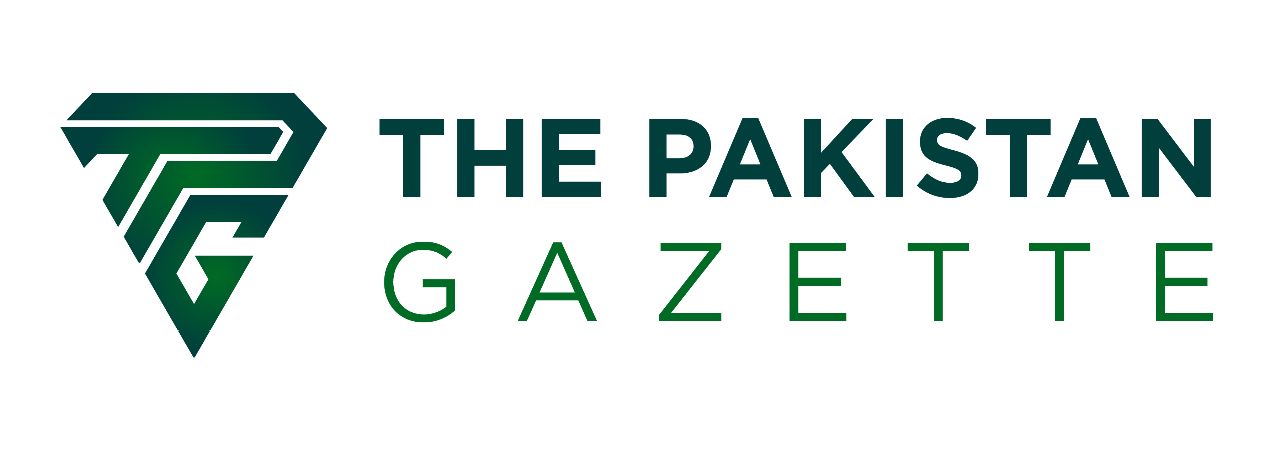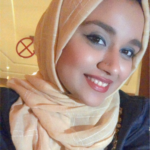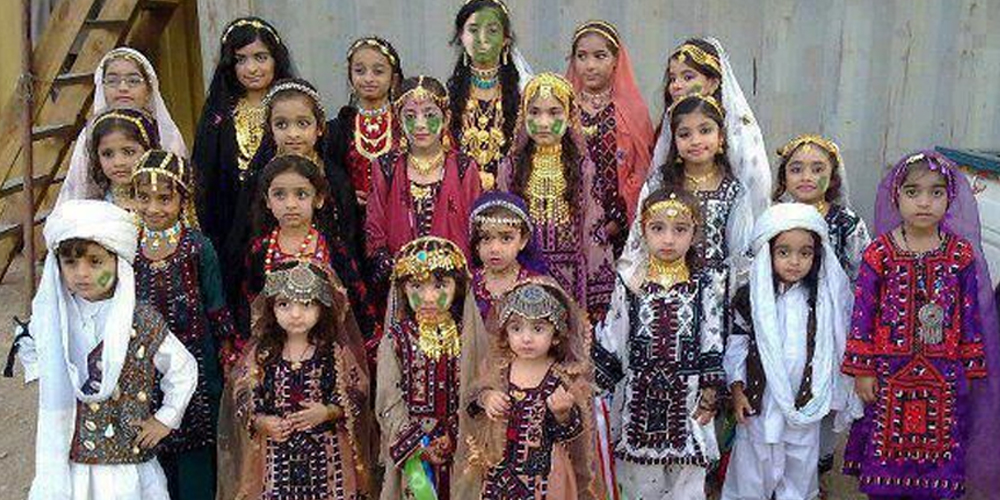
Cultural Diversity of Pakistan
Pakistan, in the centre of the South Asian Subcontinent, is a land of various splendours and cultural diversity. It is a nation with a unique past and cultural heritage. The nation’s culture has evolved over thousands of years due to the several civilizations that have inhabited the area, which have influenced everything from food and music to literature and art.
Our culture is diverse in terms of clothes, activities, customs, languages, and cuisine. Pakistan’s culture is rich in customs and reflects this region’s past. Pakistani society, its citizens, and their way of thinking are unique. Every province has unique cultural values that set its residents apart from other social classes.
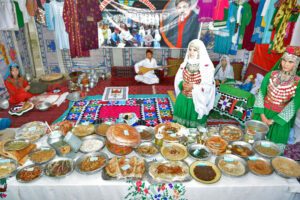
Punjabi Culture
The largest region of Pakistan based on population is known as Punjab (the country of five rivers) and is renowned for its culture. Punjab Province is home to 56% of the nation’s total population. It has 36 districts and contributed between 50% and 60% of the nation’s GDP.
Among the distinctive manifestations of Punjabi culture are the poetry of love and conflict, fairs and festivals, dance, music, and Punjabi literature. Punjabis are proud of their culture. From antiquity to the modern period, Punjabi culture is one of the oldest and most voluminous cultures in recorded history.
The language of Punjab is Punjabi. Pothowari, Hindko, Jhangvi, Shahpuri, Pahari, Majhi, and Saraiki are important varieties of Punjabi.
The Sufism tradition has a long history in Punjab. By leading Islamic lifestyles, Sufi saints helped to disseminate the Islamic message. To honour certain saints, their devotees organise festivals and fairs. The fairs and festivals exhibit folklore and cultural traditions.
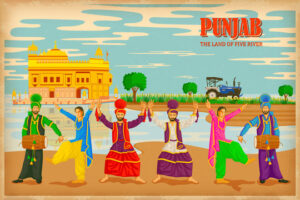
The Bhangra is the most well-known musical genre in Punjabi culture, and it is gradually taking over the mainstream music business. Due to its lengthy history, several dance styles have developed. Sammi Dhamal, Sankara Juli, and Lodhi are a few other well-liked dance forms.
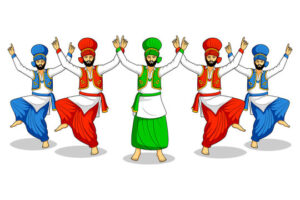
Tandoori chicken is the most well-liked dish in Punjabi cuisine. The majority of Punjabi cuisine is served with rice or roti. Popular spicy meals are examples of cuisines that are unique to Punjab. Tea is eaten seasonally and is traditionally served to guests by the majority of Punjabis. These dishes have gained widespread recognition as delicacies across the world.
The Patiala shalwar is also highly popular. The original attire for Punjabi ladies was the Punjabi Ghagra, which has been supplanted by the shalwar suit. The kurta, which was formerly the customary attire for Punjabi males, has been supplanted by the kurta and pyjama.
The people of Punjab are highly kind and outgoing. A diverse population made up of several tribes, clans, and communities, Punjabis are renowned for celebrating each and every cultural heritage. Punjabis also believe in the caste system, although as more people get educated, the distinctions are fading.
People from Punjab are fervent sports fans. Kabaddi and wrestling, which are equally popular in other regions of Pakistan and are played at the national level, are popular among Punjabis. Football, hockey, horse racing, boxing, and cricket are a few of the prominent sports. The largest celebration, which includes sporting events, exhibits, and livestock competitions, is the National Horse and Cattle Show in Lahore.
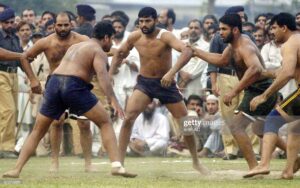
Everywhere throughout the nation, Lahoris are known for their festivals, especially the kite-flying Basant holiday in the spring. Baisakhi, Teej, and other festivals are also observed in the Punjab area. Punjab is highly rich in literature and Sufis adds more to its literature. Sultan Bahu, Mian Mohammad Baksh, Baba Farid, and Shah Hussain are a few well-known Punjabi poets. Heer Ranjha, sometimes referred to as Shakespeare of Punjabi, is considered Waris Shah’s most important contribution to Punjabi literature. Bulleh Shah was a philosopher, humanist, and Punjabi Sufi poet. Bulleh Shah mostly utilised a Punjabi poem form known as the Kafi. Sassi-Punnu, Sohni Mahiwal, and other well-known folktales from Punjab have been handed down through the decades.
Sindhi culture
Following the well-known River Indus, Sindh was given its name. The region was known as Sindhu, which is Sanskrit for the sea. Dravidian cultures urbanized around 3000 B.C. and offered to advance to the Indus Valley Civilization. The British occupied Sindh in 1843, according to current history. The Sindh region was still a part of British India till 1947 when it became a part of Pakistan.
The 2400-year period saw the development of the Sindhi language. After Sindh’s inhabitants interacted with Aryans, their language evolved into Indo-Aryan (Prakrit). As a result, the Sindhi language has a strong Prakrit foundation, much like Sanskrit, the national language of India. It also has vocabulary from Arabic, Persian, and some Dravidian ancestors from the Mediterranean sub-mainland. Saraiki, Kutchi, Memoni, Brohi, and Dhatki are a few different dialects.
For many years, Ajrak and Sindhi Topi have served as emblems of Sindhi development and way of life. In essence, the term “ajrak” refers to shawls with distinctive block prints. These shawls exhibit the distinctive designs and patterns of Sindhi culture. Usually, these shawls are made using the colours red, black, and yellow.
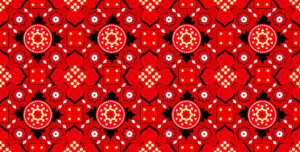
The term “Sindhi food” refers to the regional cuisine of the Sindhi people of Sindh, Pakistan. The staple diet of most Sindhi families consists of rice and wheat-based flatbread (phulka), along with two other dishes—one sauced and one dry.
Traditional Sindhi sports like Kabaddi, Malakhra, Wanj Watts, Horse Dancing, Horse Racing, and Cattle Race are invited and sent on certain affiliations.
Mystics, martyrs, and famous Sufis rule Sindhi society. It has always been a place that cherishes excellent culture, the arts, and tranquilly. There were outstanding Sufi (spiritualist) artists like Shah Abdul Latif Bhitai, who lived his life promoting peace and was a defender of the truth. Bhitai was a phenomenal artist as well.
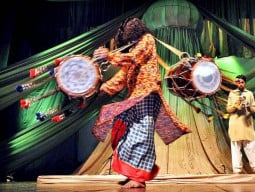
The majority of Sindhi people choose an agriculturally oriented way of life. For the locals who cultivate on these plains, the lush Indus Plains are a major source of revenue. In the Thar’s desolate areas, an itinerant lifestyle is rather typical, when humans and their animals wander about in quest of freshwater sources.
Pashtun culture
The origins of Pakhtuns have been theorized to be Aryan, Jewish, Arab, or mixed. None of them persuaded me to draw a conclusion.
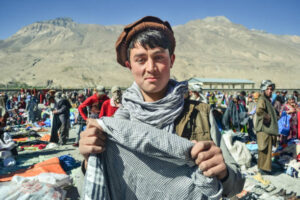
Tikka, serge, sugi ka halwa, kawa, chapli kabab, kabala paleo, and long naans are some of the most well-liked foods.
Pathans are incredibly well-known for their poetry; it is evident from their poems that they are passionate and committed. Amir Koror Suri, Khushal Khan Khattak, Rahman Baba, and many others are among the well-known authors.
Attention Khattak dance, Masud, and Waziri motion are well-known Pashtun dancing styles.
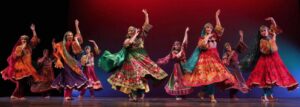
Typically, Pashtun males wear a Partoog-Korth (shalwar kameez is Urdu) with a pakul (Pashtun cap). Young people wear various types of caps, such as topis, in the Kandahar region, whereas in Peshawar, they wear white kufis. Karakul caps are occasionally worn by pioneers or tribal chiefs, such Hamid Karzai and others. Females and young ladies typically wear long gowns with a thin piece of fabric covering their hair. They also don gorgeous Pashtoon outfits and superb handmade diamonds.
Balochi Culture
The culture of the Baloch is not what people often think. Baloch culture is rich in traditions and artwork despite the reality that Balochistan is a region of barren land, deserts, and mountains. One of the most well-known female-dominated crafts is Balochi weaving. The practice of recounting stories is another aspect of Baloch culture. Baloch culture places a high value on artists and storytellers.
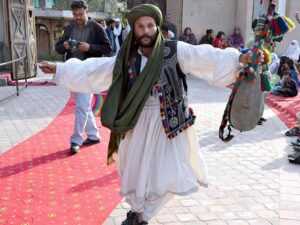
In Baloch culture, the national garment, the shalwar kameez, is worn with certain augmentations and changes, much as in the rest of Pakistan. Each person of every clan grooms themselves attractively and uniformly. The standard headgear for Bloch males includes a turban, broad, baggy shalwar, and knee-length shirts. Women’s clothing consists of a shirt with a large front pocket, weaving, and circular mirror work. The head and shoulders are covered by a large Dupatta or Chaddar.
The Baloch culture is rich in songs, dances, and music. Well, the Nazenk and Salon are popular wedding anthems in Baloch culture. The primary instruments are three types of flutes known locally as Nal, Tamboura, and Soros.
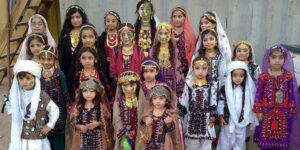
Baloch people often eat in the morning and at night. A portion of the Baloch feast consists of rice and millet. Additionally, meat plays a vital role; people’s favourite meal is “Sajji.” Vegetables, milk, and butter are other components of Balochi cuisine.
Popular games include chauk and Ji. In addition, the richer members of clans enjoyed playing games including wrestling, horse hustling, shooting, and chasing. In groups of certain clans, games and betting are also very common.
Conclusion
Over 165 million people call Pakistan home, and they come from a variety of social, racial, linguistic, and cultural backgrounds. The country was created in 1947 following the separation of the British Indian colony based on the Islamic identity of the local population; however several socioeconomic and ethnic groupings have retained their own characteristics.
The writer is a senior product manager at Cloud Pages.
